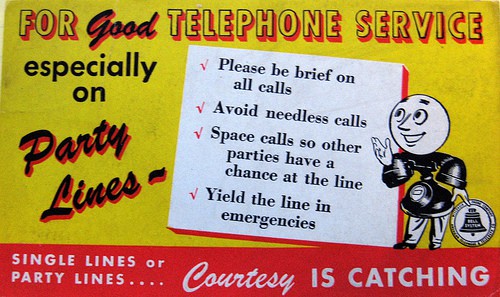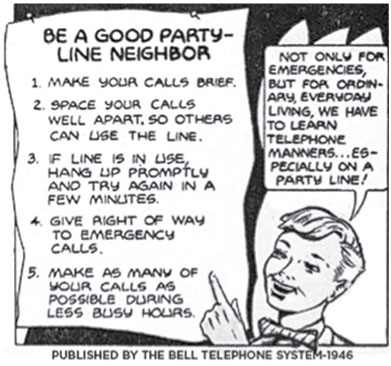 The average Charter/Spectrum customer shares their internet connection with up to 499 of their neighbors, according to an admission made today by Charter Communications CEO Thomas Rutledge.
The average Charter/Spectrum customer shares their internet connection with up to 499 of their neighbors, according to an admission made today by Charter Communications CEO Thomas Rutledge.
“Our average node size is around 500 homes,” Rutledge told investors on a morning conference call.
According to a lawsuit filed by the New York State Attorney General Eric Schneiderman, from about 2012, Spectrum-TWC’s network across New York typically provided about 304Mbps (8 x 38Mbps channels) of bandwidth to be shared among all the subscribers in a service group. In some areas, this would mean that 300 customers in a node would have around 1Mbps of bandwidth to use if all 300 subscribers used the internet at the same time. Time Warner Cable had begun expanding bandwidth on DOCSIS nodes to 16 channels at the time Charter Communications acquired the company, giving customers shared bandwidth of about 608Mbps.
Remarkably, Rutledge’s admission suggests some Charter customers may be serviced by DOCSIS nodes even more populated than the ones in New York State that regularly failed to deliver advertised internet speeds and prompted the Attorney General to file a lawsuit against Charter.
New York’s lawsuit claimed as of February 2016, the average Time Warner Cable customer in the state shared their connection with about 340 other customers. Information obtained from Time Warner Cable found some nodes with as few as 32 subscribers while the most overcongested had as many as 621 subscribers.
 Rutledge’s comments this morning suggest Charter/Spectrum customers may be sharing their connection with up to 499 of their neighbors, making them more likely to experience congestion potentially worse than experienced with Time Warner Cable. Standard internet service from Charter is also much faster than Time Warner Cable’s corresponding Standard plan — 60Mbps vs. 15Mbps, which has the potential to lead to even worse slowdowns if customers use their internet connections at the same time.
Rutledge’s comments this morning suggest Charter/Spectrum customers may be sharing their connection with up to 499 of their neighbors, making them more likely to experience congestion potentially worse than experienced with Time Warner Cable. Standard internet service from Charter is also much faster than Time Warner Cable’s corresponding Standard plan — 60Mbps vs. 15Mbps, which has the potential to lead to even worse slowdowns if customers use their internet connections at the same time.
Rutledge defended the average node size by claiming Charter has a lot of fiber in its network.
“And we have the ability to take that fiber deeper,” Rutledge said. “We have the ability incrementally to take the network to a passive network and to do that at reasonably efficient capital cost through time and to do that in very targeted ways where we need the capacity. So we’re very comfortable with the extensibility of our network and the ability to put high capacity anywhere in our network.”
Rutledge said node expansions take place through a “market demand driven sort of process.”
“There are bunch of ways you can manage capacity on our network,” Rutledge explained. “We can do what are called virtual node splits. If you clear analog spectrum and go all-digital, [that can create] excess capacity in your network, and [if] you have demand to put more capacity in a node, there [are] two ways of doing it. One way is to physically split a node into a smaller node, which requires the placing of an electronic device in the field, and maybe the extension of some fiber. It depends on how the architecture of that is structured, but it’s relatively inexpensive on a grand scale capital perspective, but a lot more expensive than a digital or virtual node split. And you can do those if you have channel capacity by just recreating additional DOCSIS paths to create a virtual node essentially. And so we manage our network for the future based on the actual load on the network as opposed to some theoretical issue.”


 Subscribe
Subscribe
DSL lines are not shared. COAX and Fiber lines are shared. You will NOT get a coax or fiber line for home use that is not shared, and there is no reason to. Netflix HD streaming uses about 5mb/s so you do not even need the capacity of one physical channel on coax or fiber. Currently they have to many people per channel. They do not want to provision for every subscriber to be streaming at the same time.
Depends on the fiber topology actually. PON has contention, albeit with only a few dozen other customers. Active is similar in topology to DSL; direct line all the way back to the aggregation point. And, as Switeck says, you can still have contention before the last mile. For example if you have AT&T VDSL, with a gigabit to the VRAD, and that VRAD is serving 100 customers, all with at least 12 Mbps speeds. Maybe you don’t notice the contention, but the ratio is above 1:1. Assuming there are 100 customers on the VRAD, anyway. Realistically they’re all using cable… Read more »
DSL is shared at the DSLAM level — these are expensive devices often with limited backhaul, sometimes resulting in even worse contention ratios than cable. This is mainly to do with ADSL being offered in sparser population areas than cable.
Even “above” the DSLAM and CMTS level, both ADSL and Cable ISPs have shared infrastructure that overwhelmingly has a contention ratio worse than 20:1.
Contention ratio information is not even available for most ISPs in the USA, despite being mandatory in many 1st world countries.